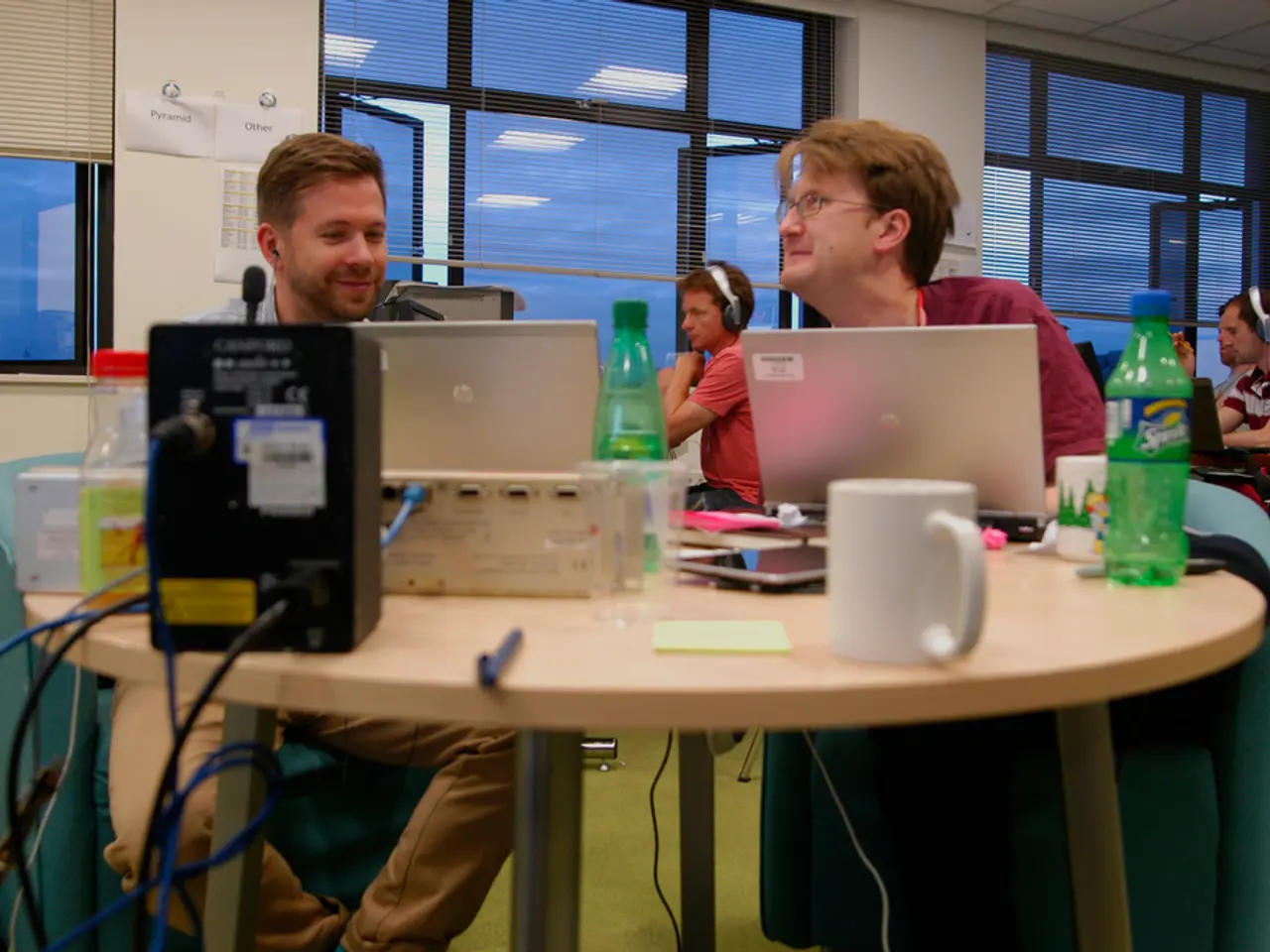Enhancing Employee Morale and Teamwork: A Focus on Cooperation and Mutual Assistance
In today's fast-paced business world, teamwork and collaboration are key to achieving success. Companies like Zipcar, Patagonia, Apple, and Tesla have realised this and have developed unique strategies to motivate and foster collaboration among their employees.
One such approach is Zipcar's 'Ziptopia', an environment that encourages regular team-building activities, an open office plan, and an emphasis on collaboration and communication. This open and inclusive culture is designed to empower employees to contribute their ideas, skills, and talents, fostering a sense of group cohesion and a positive team dynamic.
Leaders play a crucial role in this process. They provide a clear vision and direction for the team, set clear expectations, and hold team members accountable for their performance. Recognising and rewarding team members for their contributions is another effective strategy for boosting motivation.
Effective communication is another essential ingredient. Leaders encourage open communication and feedback, ensuring employees have a clear understanding of the shared goals and objectives of the team. Clear communication also helps in managing conflicts effectively, another key factor in maintaining a productive and motivated team.
A manageable workload is also vital. Overwhelming tasks can demotivate employees and hinder collaboration. Companies that invest in AI training for employees, such as those promoting self-organization, have shown higher motivation, productivity, career satisfaction, and trust in leadership.
Creating a supportive and inclusive work culture is equally important. Leaders create an environment where employees feel valued and empowered, leading to greater job satisfaction and employee engagement. This, in turn, leads to improved problem-solving, enhanced decision-making, and increased productivity.
Companies like Patagonia, Apple, and Tesla have achieved high employee engagement and loyalty by aligning corporate values with employee beliefs, offering outstanding benefits such as Patagonia’s paid activism leave and childcare programs, and cultivating unique corporate cultures. These approaches result in high employee satisfaction and retention.
In conclusion, successful motivation methods combine extrinsic incentives (fair pay, bonuses, recognition) with fostering intrinsic motivation by giving employees meaningful tasks and a clear sense of purpose. Organizations that implement participatory processes, continuous development, and visibility of progress achieve lasting team motivation and adaptation to change. By focusing on communication, leadership, workload, recognition, and conflict management, companies can create a strong team culture that leads to significant growth and success in their industry.






